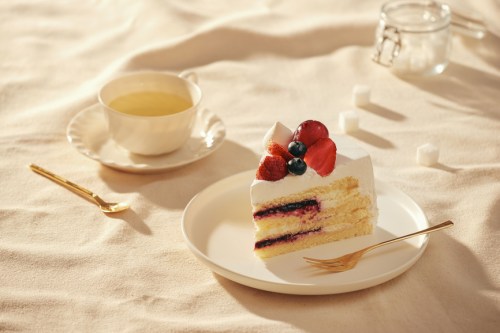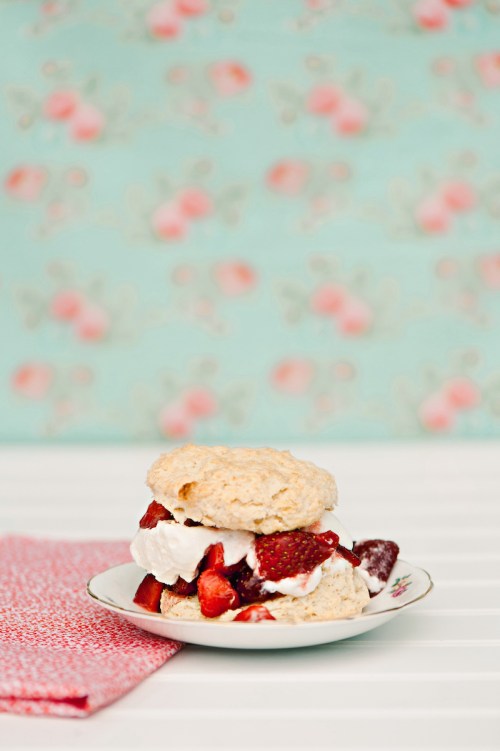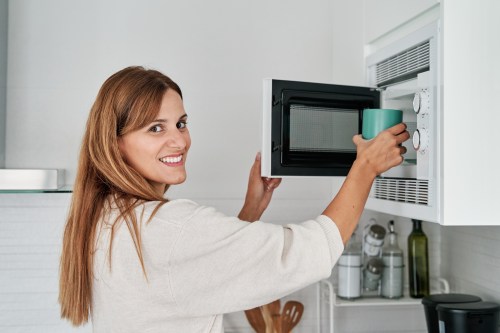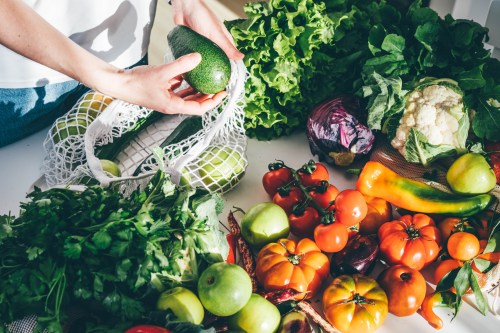Our editors independently select these products. Making a purchase through our links may earn Well+Good a commission
A Professional Baker’s Science-Backed Baking Tips for Preparing Baked Goods Everyone Can Enjoy
Discover a professional baker’s top science-baking baking tips for preparing baking goods folks with dietary restrictions can enjoy.

Fall is officially here, and as the temperatures have started cooling down enough to make cranking up the oven not totally out of the question, it’s time to dust off the stand mixers and get the oven mitts ready for some serious baking action.
Experts in This Article
founder of Milk Jar Cookies and author of The Milk Jar Cookies Bakebook
First order of business? Ensuring we have everyone in the fam accounted for, including the folks with dietary restrictions that often get left out of the ooey, gooey cookie equation.
To learn some of the best tips for baking while keeping dietary restrictions top of mind—think vegan, gluten-free, and refined sugar-free, and more—we caught up with Courtney Cowan, the founder of Milk Jar Cookies and author of The Milk Jar Cookies Bakebook. Ahead: the baking expert’s professional tips for making desserts everyone can enjoy with a little help of ~science~ that’ll take your homemade treats to level one hundred.
Why making the right recipe modifications is so important when baking
Like most things in life, Cowan says perfecting a recipe can involve a lot of trial and error. “Experimenting with different ingredients is one of my favorite parts of baking and what eventually led me to my signature recipes. There are so many different ways to replace ingredients that might not work for you, it just might take a few tries before you figure out the exact amount to achieve the flavor and texture you’re looking for,” she says. This applies to all forms of baking. (Trust the process!)
Cowan quickly learned that baking and science go hand-in-hand. “My mom explained leavening agents to me, and it lit my brain on fire. I proceeded to see baking as one big science experiment and loved discovering how different ingredients or different amounts of certain ingredients impacted what I was making,” she says. Meaning changing one ingredient can completely alter a recipe and create the need to adjust another measurement or ingredient to achieve the desired taste or texture.
Cowan also notes that regulating the time and temperature of a recipe is absolutely imperative when baking. “If your temperature is too high, it won’t take as long to bake, but your product also won’t spread out, leaving your cookie looking like a toasty, melted ice cream scoop instead of a cookie. On the flip side, if the oven isn’t hot enough, your cookies will take longer to bake and be much flatter,” she says.
A professional baker’s tips for baking with dietary restrictions
Although there are a million different ways to bake for dietary restrictions, Cowan shares some of the most common swaps she frequently makes and the ratios to adjust a recipe as needed. For starters, Cowan likes to replace eggs or oil in a recipe with applesauce. “Oil will be a one-to-one ratio and each egg can be replaced by one-quarter cup of applesauce,” she says. Applesauce has the ability to add moisture to a batter just as well as eggs or oil.
Meanwhile, Cowan notes that it’s much easier to make gluten-free-friendly pastries nowadays. “There are a lot of phenomenal pre-made mixtures of gluten-free flour that can be substituted on a one-to-one ratio. My favorite is Cup4Cup,” she says.
Then, when it comes to avoiding adding refined sugars, Cowan suggests replacing white sugar with honey, as she notes they have the most similar flavor in the final product. Additionally, she recommends maple syrup, but says to keep in mind that it can add a maple-y flavor to your baked goods. “With either of these ingredients, you can do a substitution of three-quarter cup for every cup of sugar that your recipe requires.”
The pastry tools a baker can’t live without
Pastry pros have arguably one of the best tool boxes to dig through—offset spatulas, bench scrapers, you name it. But for Cowan there are nine she absolutely can’t live without. “My arsenal includes a set of dry measuring cups and spoons, a glass liquid measuring cup, a zester, a dough cutter, a set of glass mixing bowls that can handle hot and cold ingredients, a stand mixer—although a hand mixer is totally fine if you can’t do the stand mixer—a ceramic pie pan, and, of course, a baking sheet.”
Although this may sound like a major investment, Cowan says the good news is that most of these can be found relatively cheaply, yet will last you a long time, if not a lifetime. Case in point: She’s made tens of thousands of cookies at home with a $20 hand mixer for years. So, that’s all to say, it’s never too late to pick up baking as a hobby. And if you’re ready to jump right into it, Cowan’s strawberry shortcake recipe from her cookbook is the perfect crowd-pleaser that can easily be adapted for any dietary restriction.

Strawberry shortcake recipe
Yields 8-10 servings
IngredientsFor strawberry filling: 6 cups fresh strawberries, quartered1/4 cup sugar1/4 Tsp lemon juice
For whipped cream: 1 cup heavy cream, cold2 Tbsp powdered sugar1 Tsp pure vanilla extract
For the biscuits: 3 cups all-purpose flour1/4 cup sugar2 Tbsp baking powder1 Tsp table salt12 Tbsp (1 cup) unsalted butter, cold and cubed1 cup buttermilk, plus 2 Tbsp for brushing tops1 Tsp pure vanilla extractCoarse sugar for sprinkling on top
To make the strawberry filling: In a medium bowl, combine strawberries, sugar, and lemon juice and stir until the sugar dissolves. Cover and place in the refrigerator.
To make the whipped cream: 1. Using a hand mixer or a stand mixer with the whisk attachment, whip the heavy cream, powdered sugar, and vanilla extract on medium-high until medium-stiff peaks form, about three to four minutes. Medium-stiff means your peaks will be stiff enough to hold their shape but will curl over at the top.2. Serve immediately or cover tightly and refrigerate for up to 24 hours.
To make the biscuits: 1. Preheat the oven to 425°F.2. In a large bowl, whisk together the flour, sugar, baking powder, and salt. Using a pastry cutter or a fork, cut in the butter.3. In a small bowl or liquid measuring cup, combine one cup of buttermilk and vanilla extract. Add to the flour mixture and stir until just combined.4. Transfer the dough to a floured surface and flatten down until approximately one-inch thick. Using a biscuit cutter, cut out your biscuits. Try not to twist the cutter, as this will affect how much your biscuits rise. Place closely together on a baking sheet lined with parchment paper. Brush the tops of each biscuit with remaining buttermilk and sprinkle with coarse sugar. Bake for 13-15 minutes until golden brown.5. Once the biscuits have cooled, cut each one in half and layer the strawberries and whipped cream to your liking.
Cowan’s recommended ingredient swaps:
Simply replace the flour with three and a quarter cups of gluten-free flour, the butter with a vegan butter alternative, and the milk with a non-dairy option. “I like to use soy milk for the biscuits and oat milk for the whipped cream, but you can use the same one for both if you prefer,” she says. “And note that, as with regular biscuits, you want to just mix the flour enough to combine, it’s helpful to mix the gluten-free flour a few extra times to help build up more structure in the dough.”
After strawberry shortcake, vegan chocolate chip cookies are up next:
Sign Up for Our Daily Newsletter
Get all the latest in wellness, trends, food, fitness, beauty, and more delivered right to your inbox.
Got it, you've been added to our email list.










